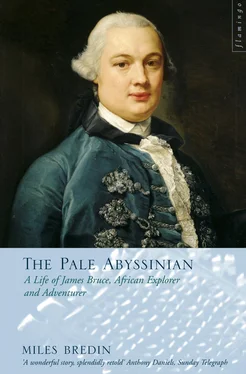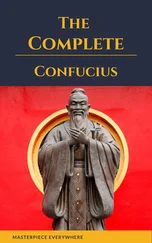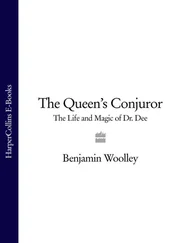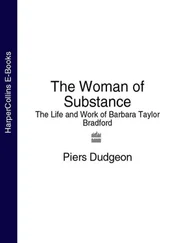Though this trough was none of the largest, and three cows were already drinking in it, I resolved to come in for my share [wrote Park in his first book] and kneeling down, thrust my head between two of the cows, and drank with great pleasure, until the water was nearly exhausted, and the cows began to contend with each other for the last mouthful.
This may have been acceptable and successful behaviour (until his untimely death in 1806) in Mungo Park’s West Africa but in more sophisticated Abyssinia and Sudan, Park’s method would have labelled Bruce an expendable slave. Hard though Bruce’s youth was, rather than weaken him it helped him to develop an emotional carapace that little could crack.
In London, he at once dedicated himself to learning, leaving most of the running of the wine business to his brother-in-law. In the next two years he became fluent in Spanish and Portuguese, brushed up his Greek and Latin and learned how to draw. At Harrow, he had been taught basic drawing skills but he wanted to be able to paint the sights he was planning to visit. His interest in the wine business would give him the opportunity to do a Grand Tour like so many of his contemporaries but he wanted to make his journey worthwhile. His constant friend, the artist and engraver Robert Strange, found him a teacher, Maître Jacob Bonneau, whose duty it was not only to teach Bruce how to draw but also to instil in him what the editor of the second edition of Bruce’s Travels described as ‘a correct taste in painting’. The midnight ride after Adriana’s death had done nothing but worsen Bruce’s health and had caused a recurrence of his childhood bronchial problems. For two years he kept himself one part removed from society, coughing and spitting blood whilst studying astronomy, art and architecture and dealing as little as possible with the wine business. It was not until 1757 that he believed himself sufficiently recovered and well enough prepared for informed tourism.
In July of that year, Bruce set sail from Falmouth to embark on a tour of Spain and Portugal, justified by doing some business with the British port families in Oporto. It was an eventful journey. Britain was again fighting with France – indeed, they were set upon by two French ships during the voyage. Bruce was not one to panic. ‘My fellow travellers Messrs Stevenson [sic] and Pawson went down and put each of them on two shirts in case we were taken. I made no preparation,’ he told his commonplace book. He would maintain his courage in the face of danger for the rest of his life but he would change his mind about preparation. By the time he set off on his real travels he would be almost obsessive in his planning.
They landed at La Corunna on 15 July. Bruce and Matthew Stephenson immediately set off to inspect the harbour at Ferrol. Pawson was worried that they might be arrested for what today would be the equivalent of taking photographs of a strategic airport. Bruce, though, had been horrified by a Spanish captain they had met in the port who seemed to know far too much about the state of the British fleet. Imbued with a new talent for military engineering, he wanted to carry out some freelance intelligence work. They mapped the harbour, inspected the fortifications and took copious notes before setting off to do some more traditional sightseeing. Bruce and Stephenson were to spend much of the next few months together, touring through Spain and Portugal, where Bruce’s interest in martial architecture and Masonry would both have been satisfied, for the area they travelled through was rich in Templar history. The castles of the Ordem de Christo, Santiago and Calatrava, built by warrior monks whom Bruce believed to have been the forefathers of Freemasonry, were scattered about the countryside. There was much too of artistic interest, although Bruce did not hold orthodox views on everything he saw:
In the evening we went to see the famous church of Santiago di Compostella the outside is elegant enough … the inside has nothing in it worth notice … The paintings are executed with about as much judgement as they were plann’d. Considerably worse than the worst daubing I ever saw on a country signpost or with a burnt stick upon a wall.
His studies in art history at least qualified Bruce to criticize the church’s otherwise admired portico della glori by Mateo and its renowned carvings. It was not the only thing he disliked; the entire region offended him: ‘We now took our leaves of Galicia one of the most disagreeable countries ever I saw, upon all accounts the whole face of the country is hideous.’ So did Portuguese inns: ‘We were lodged in one of the worst inns in Portugal which is saying one of the worst inns in the world.’ And indeed the Portuguese themselves: ‘There are many particular customs in Portugal, all of which may be known by this rule, that whatever is done in the rest of the world in one way, is in Portugal done by the contrary.’
Though Bruce loathed Portugal and the Portuguese he was forced to spend some time there inspecting the vines and sampling the vintage for his wine business. His irritation was relieved only by the English people he met. In fact he was being overly harsh on the Portuguese who had just suffered a devastating earthquake that had left the country in ruins. The effects of that great earthquake can still be seen in Lisbon today where the few buildings to survive from before 1750 are those that were built on marshy ground which absorbed the tremors. Unfair or not, Bruce’s was to remain an abiding hatred. Thirty-five years later he would devote a substantial part of his book on the Nile to criticizing and discrediting the Portuguese and Spanish missionaries who had visited the country before him. Throughout his life, he bore grudges with a long-lasting and peculiar malevolence, long after the time when most people would have forgotten the original slight. In later life, he took three separate court cases, involving property disputes, through the entire judicial system to the House of Lords; his extended introduction to the Travels contained a sustained and virulent attack on critics who had offended him fifteen years previously, which he was well aware was likely to work against him. Weakness offended Bruce and he would be blind to the enfeebled Portugal’s merits for the rest of his life.
By November he had shaken the dust of Portugal from his feet and arrived in Madrid. On his way he had learnt how to deal with customs men, a lesson that was to serve him well. He wrote at the border: ‘Here you are asked for your passport by the governor and your baggage undergoes a strict search. If you have no letters to the administrator you must be particularly careful of having no snuff either French or Portuguese not even in your snuff box.’
His writing style was becoming increasingly eccentric. He sounds as though he was writing either a guide book or a letter to a friend. He was in fact merely taking notes in his commonplace book. ‘At the Caldas the Inn is very bad. I would advize all English travellers to go from Aleobaca to St Martinho which is very little out of their way.’
Bruce later formed a policy of never writing for publication unless it was on a subject not previously noted and never, as far as we can tell, showed any inclination to publish a book of his European travels. One wonders, therefore, for whom he was writing these handy travellers’ tips.
Spain, despite being full of Catholics, was fascinating territory for Bruce. He was intrigued by the Moorish and Templar castles of Andalusia and resolved to learn more about them. He started to learn Arabic in the markets of the region and contrived to gain entry to the renowned library of the Escorial (the sixteenth-century monastery built by Philip II for his warrior monks). He made friends with and was even offered a job at court by Don Ricardo Wall, an Irish courtier of the king, but was still not allowed into the Escorial. He thus continued his tour of Europe with his interest in the world beyond it aroused but unsatisfied.
Читать дальше











